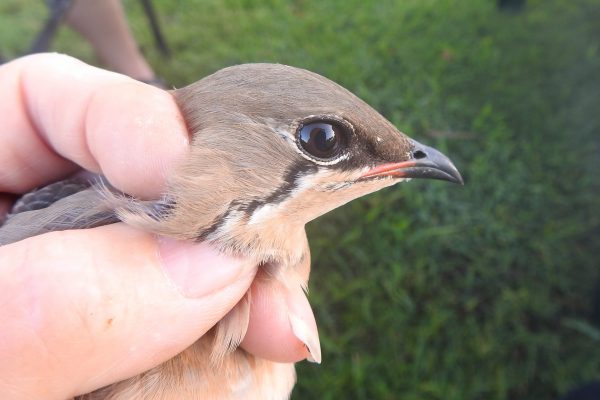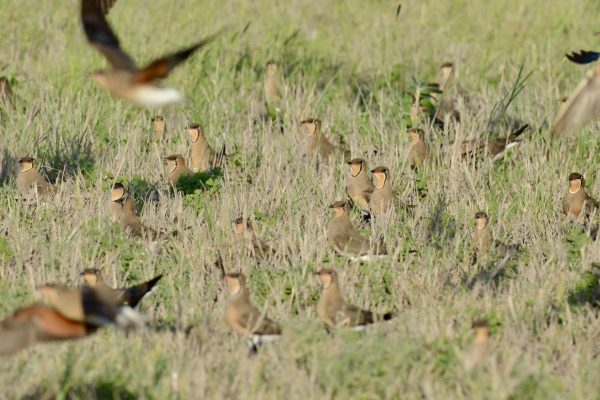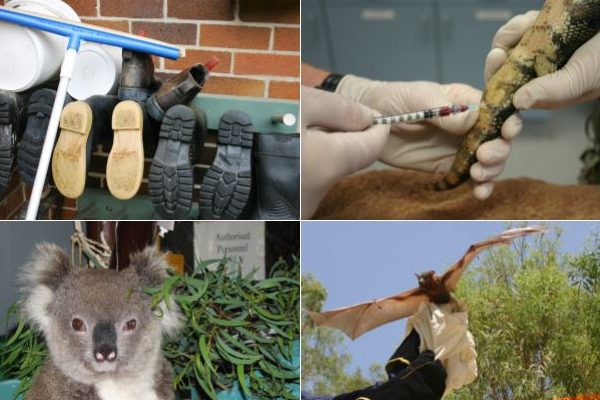-
AWSG North-west Australia Satellite Tracking Project Update (Part 2 & 3)
This is the 2nd and 3rd update on the AWSG satellite tracking project. The highlight is again the performance of the Oriental Pratincoles. All four have now left Australia on northward migration. The leading bird has now been in Cambodia for over a week and settled by the largest freshwater lake in Southeast Asia, where […]
Continue reading -
AWSG North-west Australia Satellite Tracking Project Updates
This is the fifth year the AWSG’s North-west Australia Waders and Terns Expedition team has fitted satellite transmitters on migratory waders. Five 5g transmitters were fitted on Little Curlew with the hope for more success to compare to the previous studies in 2013 and 2015; and five 2g transmitters were, for the first time in […]
Continue reading -
Australian National Wildlife Biosecurity Guidelines
Good biosecurity helps to keep wildlife, people and domestic animals safe and healthy by minimising the impacts of disease on individual animals and wildlife populations. Everyone who works with, or interacts with, wildlife has a role to play in wildlife biosecurity. The Australian National Wildlife Biosecurity Guidelines acknowledge the wide range of circumstances under which […]
Continue reading -
Australian National Report to the three bilateral migratory bird agreements
Australia has three bilateral migratory bird agreements with Japan (JAMBA), China (CAMBA) and the Republic of Korea (ROKAMBA). These agreements provide a basis for cooperation on activities for the conservation of migratory birds that move between each country. Species listed on the annexes to these agreements are a matter of National Environmental Significance under the […]
Continue reading -
Vulnerability of food supplies for migratory shorebirds to altered flow in the southern Gulf of Carpentaria, Australia
Migratory shorebirds are present in vast numbers along Australia’s Gulf of Carpentaria south-east coastline, especially from September to April. These shallow and productive tidal environments are important resting and feeding areas, as well as staging areas for birds that fly north or south. The threatened Great Knot and Far Eastern Curlew are among the many […]
Continue reading -
10th Australasian Ornithological Conference (AOC), Darwin, Australia, 2019
The 10th Australasian Ornithological Conference (AOC) will be held in Darwin, Northern Territory from 3-5th July 2019. The AOC is the primary conference for BirdLife Australia And Birds NZ, and is the largest biennial gathering of enthusiastic amateur and professional ornithologists from Australia and overseas. The main aims of the conferences are to: Promote communication […]
Continue reading -
Announcement of new publications by the Department of the Environment and Energy, Australia Government
As part of Australia’s National Science Week celebrations, the Department of the Environment and Energy of Australia Government has just released its publication showcasing research which will help us to better understand and manage wetlands, both in Australia and internationally. It highlights work done by Australian scientists under the National Environmental Science Program, as well […]
Continue reading -
North-West Australia Wader and Tern Expedition 2019
The Australasian Wader Studies Group (a special interest group of BirdLife Australia) has organized a series of special expeditions over the years in order to undertake comprehensive long-term studies of the waders and terns in North-West Australia. The next expedition will take place from 2nd to 24th February 2019. For more information, please download the […]
Continue reading -
Safe Passage: China Takes Steps to Protect Shorebirds Migrating from Australia to the Arctic
February 15, 2018. By Terry Townshend Every year, millions of shorebirds migrate to the Arctic to breed—some coming from as far away as Australia and New Zealand—and then head back again. Nearly all of the birds making this journey spend time in the food-rich intertidal mudflats of the Yellow Sea ecoregion, on the east coast of […]
Continue reading -
Celebrating Australia’s Migratory Waterbirds and their habitats
Department of the Environment and Energy Australian Government Showcasing Australia’s Flyway Site Network The East Asian-Australasian Flyway Site Network is a voluntary, non-binding, collaborative project involving over 130 sites across 22 countries. The Flyway Site Network has been operating since 1996 under the Asia-Pacific Migratory Waterbird Conservation Strategy and is now supported by the East […]
Continue reading




